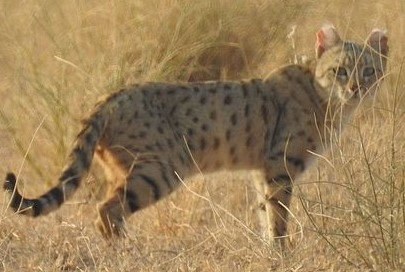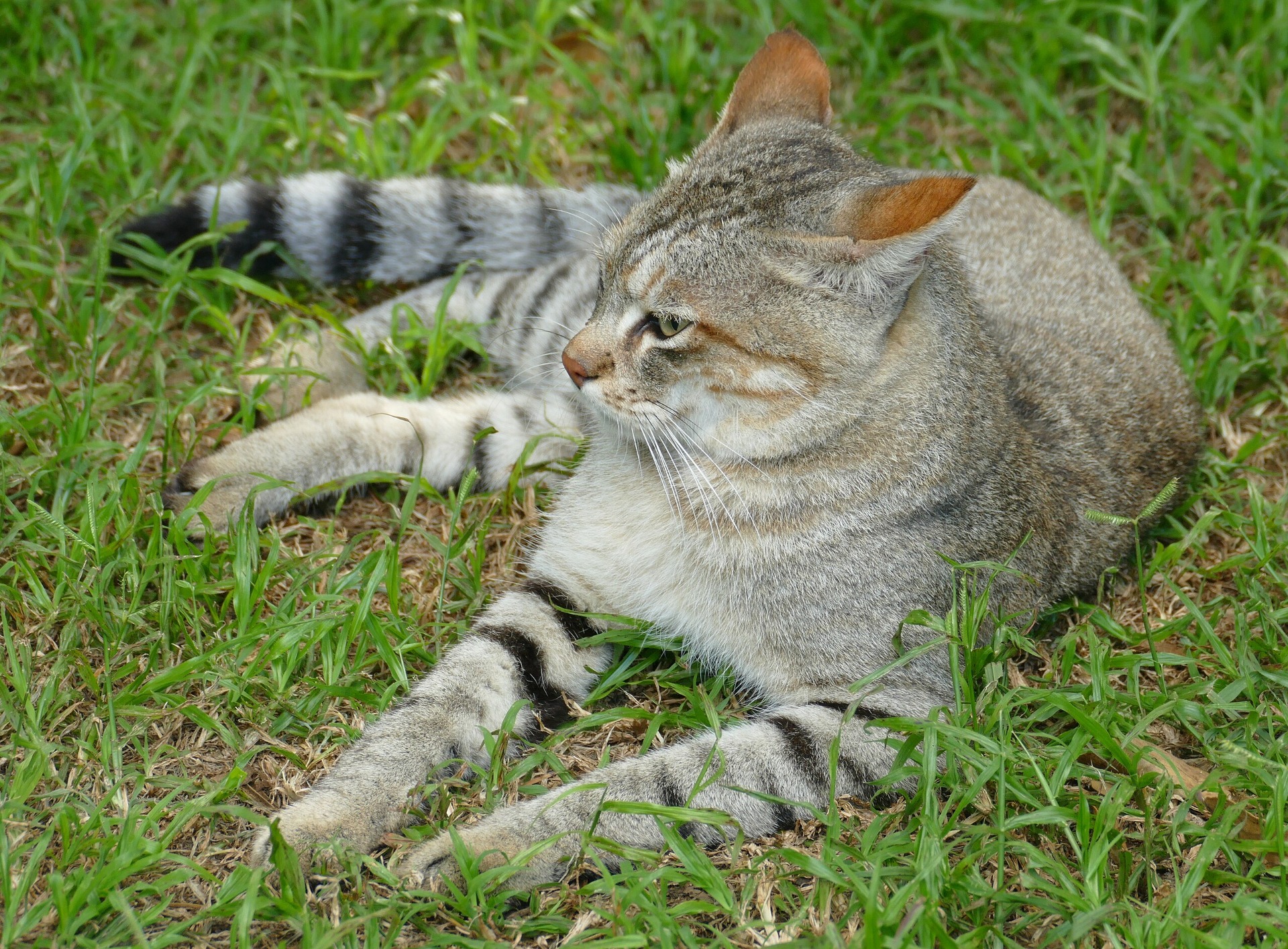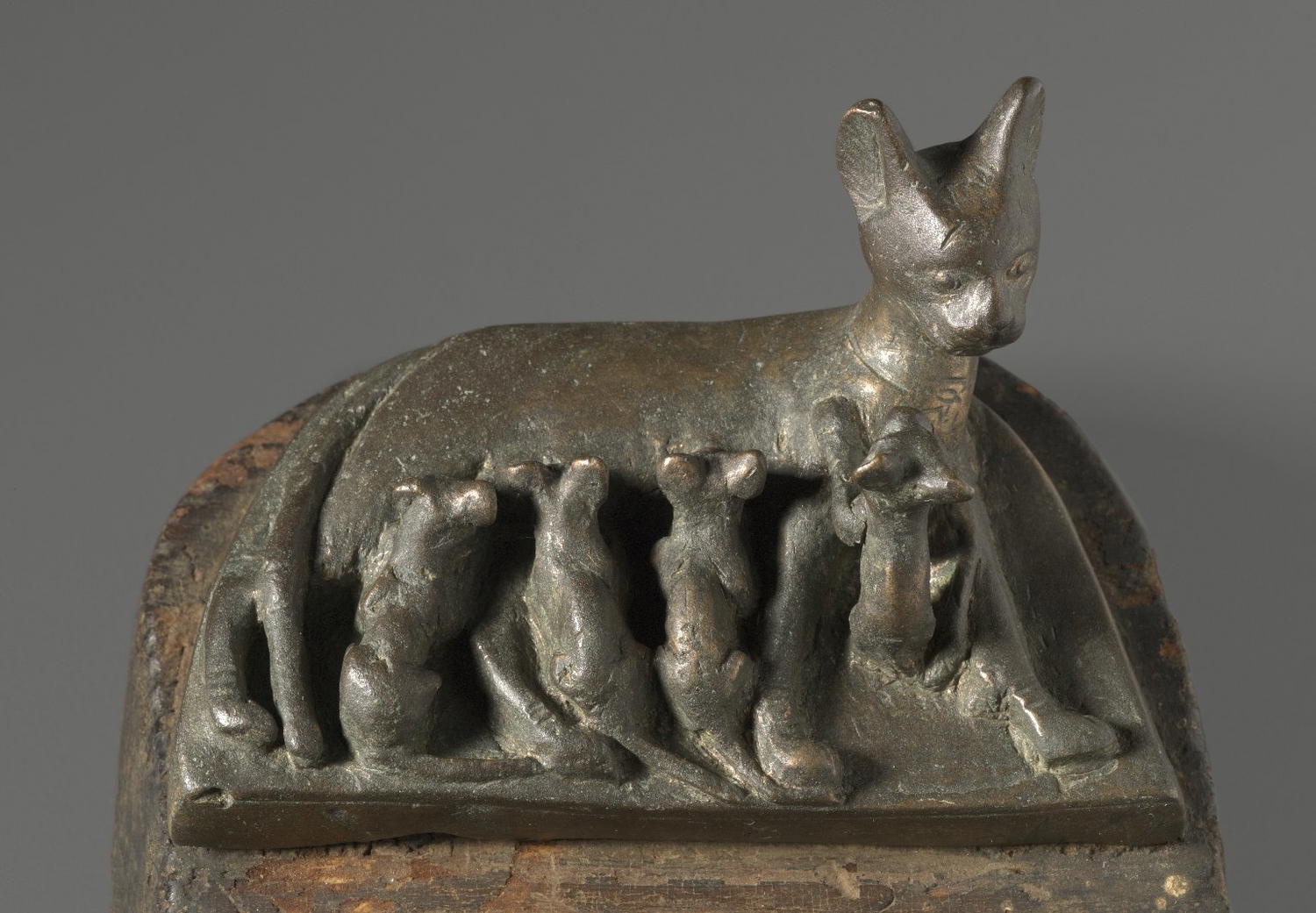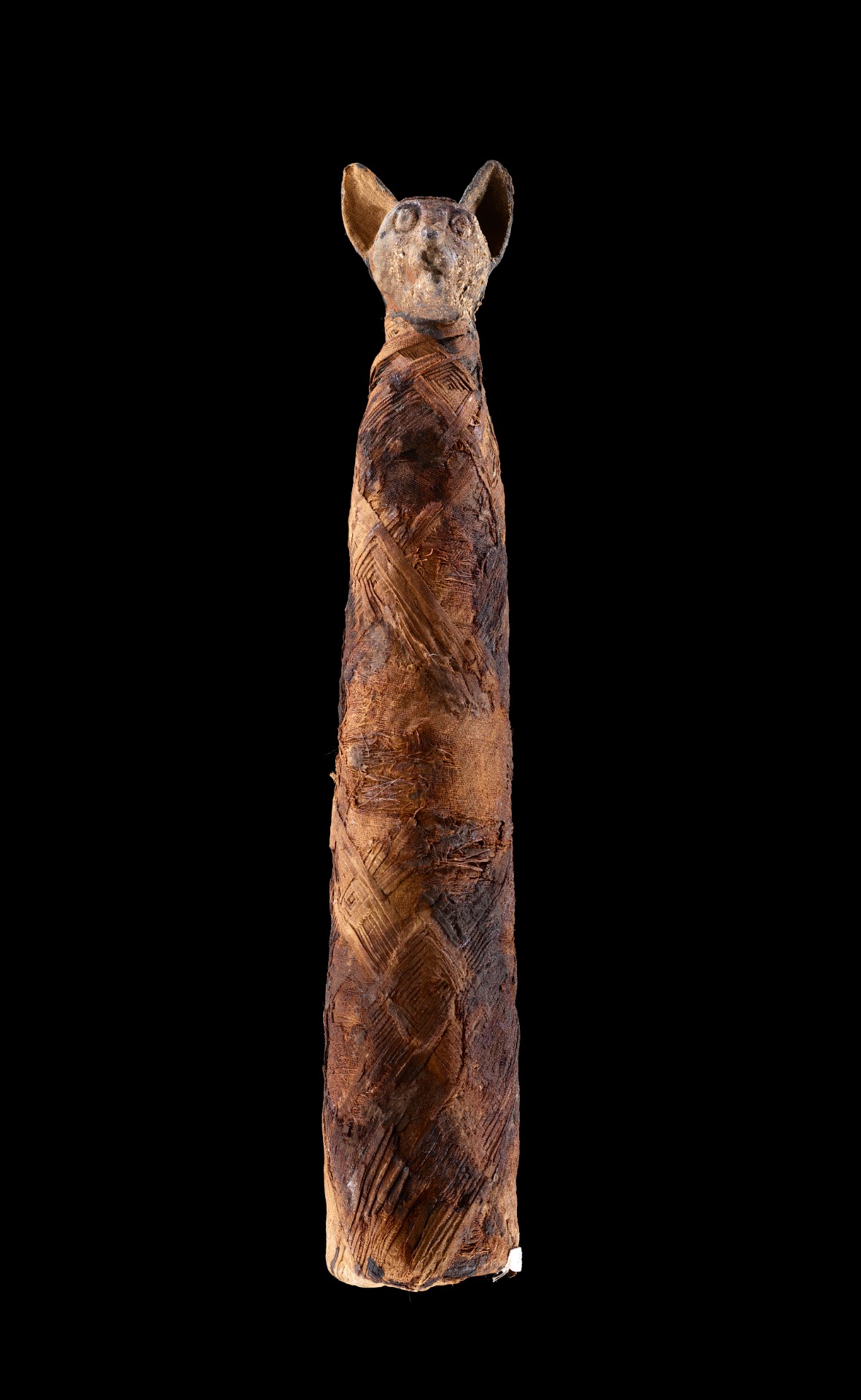Cats in Ancient Egypt
It's a pretty well known fact that cats were worshiped in Ancient Egypt. But did they actually worship them, or simply hold them in high regard?
Domestication
Let's start with their domestication...
DNA evidence suggests that wild cats first "self-domesticated" in the Near East and Egypt roughly 10,000 years ago when felines were adopted into agricultural civilizations as a way of keeping rodents at bay, and like how we domesticated wolves, the cats stuck around for food and slowly bonded with humans.
There are five subspecies of the wildcat, Felis silvestris, the domestic cat's closest relative. And while their appearance can vary by geographical location, their skeletons are indistinguishable. For this reason, archaeological evidence alone isn't sufficient to determine when and where cats were first domesticated

Episode: File 0003: Bastet Reeves and the Holy Bible
Release Date: November 6 2020
Researched and presented by Halli
- To solve the mystery, scientists at the University of Leuven in Belgium analyzed DNA samples recovered from the remains of 200 cats excavated at archaeological sites in the Near East, Africa and Europe. The cat remains were dated between 100 and 9,000 years old.
The genetic analysis -- detailed in the journal Nature Ecology & Evolution -- proved domestic cats descend from Felis silvestris lybica, the African wildcat, a subspecies native to Egypt and the Near East. Farmers in the Near East likely welcomed the presence of the wildcat, as the feline helped keep grain harvests free of rodents.
Over time, the feline's relationship with humans sufficiently altered its genome and behavior and the wildcat subspecies became domesticated. Migrating farmers brought domestic cats to new regions. Sailors brought cats aboard trading ships to hunt vermin. Thus, the domestic cat quickly spread across Europe along trade routes. Researchers have found evidence of Egyptian cats at Viking sites near the Baltic Sea.
DNA analysis also showed the earliest domestic cats were spotted, as they're depicted in ancient Egyptian murals. Striped cats didn't appear until the Middle Ages.
But
the level of devotion ancient Egyptians showed toward their cats went
far beyond a pet owner's warm affection. Over the millennia, cats in
Egypt evolved from useful village predators to physical embodiments of
the gods and symbols of divine protection.
"The Egyptians looked at the cat the same way they looked at everything, as a way to explain and personify the universe,"
explains Egyptologist Melinda Hartwig, curator of ancient Egyptian, Nubian and Near Eastern art at Emory University's Michael C. Carlos Museum in Atlanta.
Hartwig wants to make one thing clear, though: Egyptians did not worship cats, but they did believe that cats held a bit of divine energy within them. The most widespread belief was that domestic cats carried the divine essence of Bastet (or Bast), the cat-headed goddess who represented fertility, domesticity, music, dance and pleasure.
Bastet
The cat represents the goddess Bastet, who could also be shown in leonine form, with four kittens.
Bastet is the Egyptian goddess of the home, domesticity, women's secrets, cats, fertility, and childbirth. She protected the home from evil spirits and disease, especially diseases associated with women and children. As with many deities in Egyptian religion, she also played a role in the afterlife as a guide and helper to the dead although this was not one of her primary duties. She was the daughter of the sun god Ra and is associated with the concept of the Eye of Ra (the all-seeing eye) and the Distant Goddess (a female deity who leaves Ra and returns to bring transformation).
Her name was originally B'sst which became Ubaste, then Bast, then Bastet; the meaning of this name is not known or, at least, not universally agreed upon
Bastet was extremely popular throughout Egypt with both men and women from the Second Dynasty of Egypt (c. 2890 - c. 2670 BCE) onward with her cult centered at the city of Bubastis from at least the 5th century BCE. She was first represented as a woman with the head of a lioness and closely associated with the goddess Sekhmet but, as that deity's iconography depicted her as increasingly aggressive, Bastet's images softened over time to present more of a daily companion and helper than her earlier forms as savage avenger.
Although
she was greatly venerated, she was equally feared as two of her titles
demonstrate: The Lady of Dread and The Lady of Slaughter. She is
associated with both Mau, the divine cat who is an aspect of Ra, and
with Mafdet, goddess of justice and the first feline deity in Egyptian
history. Both Bastet and Sekhmet took their early forms as feline
defenders of the innocent, avengers of the wronged, from Mafdet. This
association was carried on in depictions of Bastet's son Maahes,
protector of the innocent, who is shown as a lion-headed man carrying a
long knife or as a lion.
In
her earliest known form, as depicted on stone vessels of the 2nd
dynasty, Bastet was represented as a woman with the maneless head of a
lioness. The iconography of the goddess changed, however, perhaps as her
nature began to be viewed as milder than that of other lioness deities.
Her
cult center at Bubastis in Lower Egypt became one of the richest and
most luxuriant cities in Egypt as people from all over the country
traveled there to pay their respects to the goddess and have the bodies
of their dead cats interred in the city. In Egyptian art, her
iconography borrowed from the earlier goddess Mafdet and also from
Hathor, a goddess associated with Sekhmet who was also closely linked to
Bastet. The appearance of the sistrum in Bastet's hand in some statues
is a clear link to Hathor who is traditionally seen carrying the
instrument. Hathor is another goddess who underwent a dramatic change
from bloodthirsty destroyer to gentle friend of humanity as she was
originally the lioness deity Sekhmet whom Ra sent to earth to destroy
humans for their sins. In Bastet's case, although she became milder, she
was no less dangerous to those who broke the law or abused others.
Herodotus is the primary source for information on the cult of Bastet and, unfortunately, does not go into great detail on the particulars of her worship. It seems both men and women served as her clergy and, as with the other Egyptian deities, her temple at Bubastis was the focal point of the city providing services ranging from medical attention to counseling to food distribution. Herodotus describes this temple:
Save for the entrance, it stands on an island; two separate channels approach it from the Nile, and after coming up to the entry of the temple, they run round it on opposite sides; each of them a hundred feet wide, and overshadowed by trees. The temple is in the midst of the city, the whole circuit of which commands a view down into it; for the city's level has been raised, but that of the temple has been left as it was from the first, so that it can be seen into from without. A stone wall, carven with figures, runs round it; within is a grove of very tall trees growing round a great shrine, wherein is the image of the goddess; the temple is a square, each side measuring a furlong. A road, paved with stone, of about three furlongs' length leads to the entrance, running eastward through the market place, towards the temple of Hermes; this road is about 400 feet wide, and bordered by trees reaching to heaven. (Histories, II.138).
The
popularity of Bastet grew from her role as protector of women and the
household. As noted, she was as popular among men as women in that every
man had a mother, sister, girlfriend, wife, or daughter who benefited
from the care Bastet provided. Further, women in Egypt were held in high
regard and had almost equal rights which almost guaranteed a goddess
who protected women and presided over women's secrets an especially high
standing. Cats were also greatly prized in Egypt as they kept homes
free of vermin (and so controlled diseases), protected the crops from
unwanted animals, and provided their owners with fairly maintenance-free
company. One of the most important aspects of Bastet's festival was the
delivery of mummified cats to her temple. When the temple was excavated
in 1887 and 1889 CE over 300,000 mummified cats were found.
Wilkinson, commenting on her universal popularity, writes:

Amulets of cats and litters of kittens were popular New Year gifts, and the name of Bastet was often inscribed on small ceremonial 'New Year flasks', probably to evoke the goddess as a bestower of fertility and because Bastet, like other lioness goddesses, was viewed as a protective deity able to counter the darker forces associated with the 'Demon Days' at the end of the Egyptian year. (178)
Bastet
was so popular that, in 525 BCE, when Cambyses II of Persia invaded
Egypt, he made use of the goddess to force the Egyptian's surrender.
Knowing of their great love for animals, and cats especially, he had his
soldiers paint the image of Bastet on their shields and then arranged
all the animals that could be found and drove them before the army
toward the pivotal city of Pelusium. The Egyptians refused to fight for
fear of harming the animals and offending Bastet and so surrendered.
The historian Polyaenus (2nd century CE) writes how, after his victory, Cambyses II hurled cats from a bag into the Egyptian's faces in scorn that they would surrender their city for animals. The Egyptians were undeterred in their veneration of the cat and their worship of Bastet, however. Her status as one of the most popular and potent deities continued throughout the remainder of Egypt's history and on into the era of the Roman Empire until, like the other gods, she was eclipsed by the rise of Christianity.
For that reason, cats were to be protected and venerated. At the height of the popularity of the cult of Bastet, which took hold in the second-century B.C.E., the penalty for killing a cat, even by accident, was death. And charms and amulets depicting cats were worn by men and women to protect the home and bring good luck during childbirth. Jewelry fashioned into cats and kittens were popular New Year's gifts.
Most remarkable for modern archaeologists is the sheer number of mummified cats that have been recovered from burial sites across Egypt, including hundreds of thousands piled up in the catacombs of Saqqara and Tell-Basta, the chief worship sites for the goddess Bastet. At the Temple of Bastet in Tell-Basta, it's believed that priests maintained large "catteries" that supplied a thriving trade in cat mummies.
Hartwig says that so many cat mummies have survived the centuries because destroying them would have been prohibited in ancient Egypt, since they carried the essence of Bastet. So they wound up being stashed away in pre-existing burial chambers and secondary catacombs. An excavation this month in the pyramid complex at Saqqara unearthed dozens of cat mummies, including some buried in limestone coffins.
Cats appear frequently in ancient Egyptian murals and artifacts, including the cast-bronze figurine of a cat nursing four kittens and a large limestone sculpture of a seated lion featured in a recent "Divine Felines" exhibit at the Carlos Museum. But most of the information we have about the Egyptians' veneration of cats comes via the ancient Greek historian Herodotus writing in the fourth-century B.C.E.
BUT.... As the Brooklyn museum's curatorial fellow Antonietta Catanzariti explains, it's a mistake to imagine that the Egyptians worshipped cats. Instead, the connection between felinity and divinity derived from a careful observation of the way these animals comported themselves.
"What they were [actually] doing was associating cats to specific deities because of their attitude, how they were behaving in the natural world. Everything had a meaning. A cat protecting the house from mice. Or it might just protect kittens. These were attitudes that were attributed to a specific goddess."
There is abundant archaeological evidence, however, of cats serving multiple roles. Cats were depicted protecting households against rodents and venomous snakes, but also as helpers for bird hunters and as pampered pets. Cats have been found buried in human graves, although the exact relationship between cat and human isn't always clear. Some cats were buried with offerings, indicating that someone was planning for the animals' afterlives. The recent discovery is one of the oldest examples to date of a cat burial.
Starting around 1000 B.C.E., gigantic cemeteries full of tens of thousands of cats became fairly widespread. The cats were elaborately wrapped and decorated, possibly by temple attendants. Roman travelers to Egypt described how regular Egyptians revered cats, sometimes traveling long distances to bury a deceased cat in a cemetery. Killing a cat may have even been a capital offense.
As described by scholar Alleyn Diesel, ancient Egyptians probably began attributing divine characteristics to cats gradually. The almost-supernatural grace, stealth, and night vision of cats were highly admired and might have helped them morph into truly sacred animals in the eyes of ancient Egyptians. Cats' fondness for napping in the sun led to early associations between the cat and the sun god, Ra. Lion and panther goddesses were important, but the most important cat goddess was Bastet, or Bast. She too, began as a lion. By the time of the cat cemeteries, however, Bast was depicted as a domestic cat.
Full Source List
- https://science.howstuffworks.com/environmental/earth/archaeology/ancient-egyptians-revered-cats-for-divine-energy.htm
- https://www.upi.com/Science_News/2017/06/19/Cats-were-first-domesticated-in-the-Near-East-and-ancient-Egypt-DNA-data-shows/4221497894324/?ur3=1
- https://ancientegyptonline.co.uk/cat/
- https://www.ancient.eu/Bastet/
- https://www.smithsonianmag.com/smithsonian-institution/why-ancient-egyptians-loved-their-kitties-180965155/
- https://www.arce.org/resource/cats-bastet-and-worship-feline-gods
- https://daily.jstor.org/why-ancient-egyptians-loved-cats-so-much/
- https://www.jstor.org/stable/40458771?mag=why-ancient-egyptians-loved-cats-so-much&seq=1#metadata_info_tab_contents
- https://www.jstor.org/stable/24764036?mag=why-ancient-egyptians-loved-cats-so-much&seq=1#metadata_info_tab_contents










